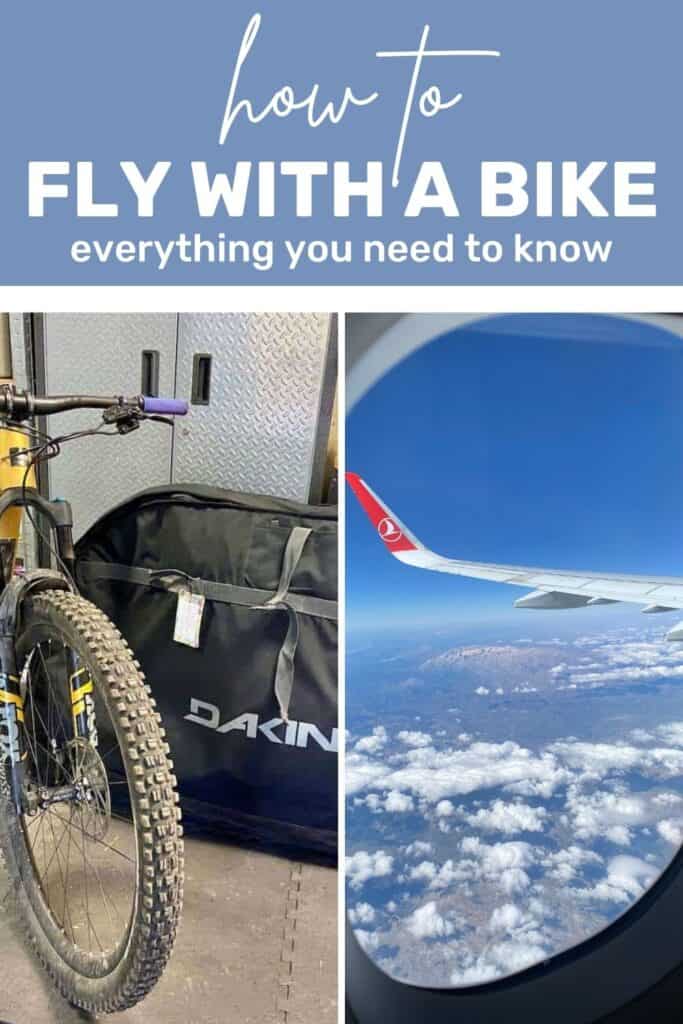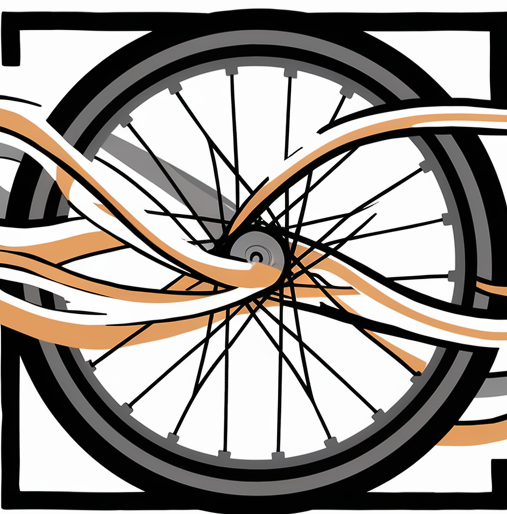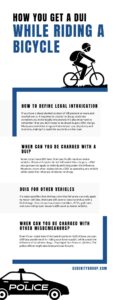Yes, you can fly with a bicycle. It is possible and many people do it.
However, there are some rules and tips you need to know. Traveling with a bicycle can be a unique adventure. Whether planning a cycling trip abroad or just moving to a new city, flying with your bike is a common concern.
Airlines have different policies and fees, and preparing your bike for travel requires some effort. Knowing what to expect can save you time, money, and stress. In this blog post, we will explore the steps and tips to make flying with your bicycle a smooth experience. From packing tips to airline regulations, we cover all you need to know. Stay tuned to learn how to take your bike on your next flight.
Preparing Your Bicycle For Air Travel
Flying with a bicycle is possible and requires careful preparation. Disassemble parts like pedals and handlebars for safe packing. Use a sturdy bike travel case to protect against damage during transit.
Preparing your bicycle for air travel can seem daunting, but with the right approach, it’s entirely manageable. Whether you’re heading to a cycling event overseas or exploring new trails on vacation, ensuring your bike arrives safely is crucial. The key is in the preparation, which involves packing it properly and disassembling it to fit airline guidelines.Packing Materials Needed
Before you start, gather all the materials you’ll need. A sturdy bike box or travel case is essential to protect your bike. You can often get a cardboard bike box from a local bike shop if you’re on a budget. Foam padding and bubble wrap are your best friends. They cushion your bike’s frame and components during the flight. Pack zip ties and packing tape to secure everything firmly. Consider using wheel bags to protect your wheels separately. If you have spare time, label each part for easy reassembly. A little preparation goes a long way in ensuring your bike’s safety.Disassembling Your Bike
Disassembling your bike might sound intimidating, but it’s a straightforward process. Start by removing the pedals with a pedal wrench. Remember, the left pedal loosens clockwise, while the right pedal loosens counter-clockwise. Next, take off the wheels. Release the brakes and use a quick-release lever or wrench to detach them. Deflate the tires slightly to avoid pressure changes during the flight. Lower the seat post or remove it completely. This helps the bike fit snugly in the box or case. Don’t forget to secure small parts like skewers and bolts in a bag. This prevents them from getting lost in transit. Once, on a trip to France, I forgot to pack my pedals separately. They ended up scratching my bike frame. A simple oversight, but one that taught me the importance of careful packing. Have you had any similar travel mishaps? By following these steps, you ensure your bicycle is well-prepared for air travel. It’s an extra effort that pays off when you see your bike arrive at your destination intact, ready for adventure.Choosing The Right Airline
Traveling with a bicycle can be thrilling. But it’s essential to choose the right airline. Airlines have different rules for bicycles. Some make it easy, while others don’t. Understanding their policies is crucial. This helps avoid surprises at the airport.
Airline Policies On Bicycles
Each airline has its own bicycle policy. Some airlines allow bicycles as checked baggage. Others have strict packaging rules. Check the airline’s website for specific guidelines. Some require bicycles to be boxed. Others might accept them wrapped in plastic. It’s vital to know what your airline expects.
Comparing Extra Fees
Airlines may charge extra for bicycles. These fees vary widely. Some airlines include bicycles in standard baggage fees. Others charge a separate fee. Always compare fees before booking. This can save money and prevent unexpected costs. Check if your chosen airline offers discounts for cyclists.
Packing Techniques For Safe Transport
Flying with a bicycle requires careful packing to ensure safe transport. Use a sturdy bike box or bag, and remove pedals and handlebars for compactness. Protect fragile parts with bubble wrap or foam to prevent damage during transit.
Traveling with a bicycle can be an exciting adventure, but ensuring your bike reaches your destination in one piece requires careful packing techniques. Whether you’re flying to a scenic cycling destination or simply relocating, knowing how to pack your bicycle safely is crucial. The key is to protect fragile parts and secure components so that your bike arrives ready for the ride of a lifetime.Protecting Fragile Parts
When packing your bicycle, the delicate parts require extra attention. Start with the derailleur, which is often the most vulnerable component. Remove it from the bike, wrap it in bubble wrap, and secure it to the frame. The handlebars also need careful handling. Loosen them and turn them parallel to the frame to save space and protect them from impact. Cover them with padding to ensure they don’t get scratched or bent. Think about the wheels too. Remove them from the frame and protect them with wheel bags. If wheel bags aren’t available, use cardboard cutouts to shield the rims. This simple step can prevent unwanted bends or dents.Securing Components
Once the fragile parts are protected, focus on securing the bike’s other components. Use zip ties or Velcro straps to keep the pedals, chain, and other loose elements in place. This prevents them from moving around and causing damage during transit. Consider using a bike-specific travel case or box. These are designed to fit your bike snugly and include compartments for various components. It might be a worthwhile investment if you travel often. Lastly, label your packed bike clearly. Include your contact information and destination address. This is crucial if your luggage gets misplaced, ensuring it finds its way back to you. Remember, your bike is more than just a piece of equipment; it’s your travel companion. Wouldn’t it be a shame if it arrived damaged? By taking these steps, you ensure that both you and your bike are ready to hit the road as soon as you land.Navigating Airport Procedures
Flying with a bicycle is possible. Airlines allow bicycles as checked luggage. Ensure proper packaging to avoid damage.
Navigating Airport Procedures Flying with a bicycle can seem daunting, but with a bit of preparation, you can glide through airport procedures smoothly. From check-in to security checks, knowing what to expect can save you time and hassle. Here’s how you can make your airport experience with a bicycle stress-free and efficient.Check-in Tips For Cyclists
Before heading to the airport, check your airline’s policies regarding bicycles. Some airlines require you to notify them in advance, while others have specific packaging guidelines. Arrive early to account for any extra time needed for checking in your bike. This can help you avoid last-minute stress and ensure your bike is handled properly. Make sure your bike is securely packed. Use a hard case or a padded bag to protect it during transit. You might want to remove pedals and turn the handlebars sideways to fit it better.Handling Security Checks
Security checks can be a breeze if you know what to expect. Be prepared to open your bike bag or box for inspection. Security personnel may want to check inside to ensure everything is safe for travel. Consider what tools you might need to quickly reassemble your bike after inspection. Having a multi-tool handy can make this process faster and smoother. Have you thought about what might be in your bike bag that could raise questions? Items like CO2 cartridges might not be allowed, so check the rules before packing them. Navigating airport procedures with a bicycle is all about preparation and knowing the rules. By following these tips, you can enjoy a smoother journey and focus on the excitement of your cycling adventure ahead.Managing Weight And Size Restrictions
Flying with a bicycle is possible with careful planning. Airlines have specific weight and size limits for bikes. Check their policies and pack your bike accordingly to avoid extra fees.
Managing weight and size restrictions is crucial when flying with a bicycle. Airlines have specific guidelines for transporting oversized items like bikes. Understanding these rules helps ensure a smooth travel experience. You’ll avoid unexpected fees and hassles at the airport.Avoiding Extra Charges
Packing your bicycle well is essential to avoid extra charges. Use a lightweight bike case to keep weight down. Most airlines have a weight limit for checked items. Exceeding this limit means paying additional fees. Weigh your packed bike at home. Make adjustments if necessary. Remove accessories or parts that add extra weight. Knowing the airline’s specific weight policy is key. Some have a flat fee for bicycles. Others charge based on weight. Planning ahead can save you money.Understanding Dimensions
Understanding dimensions is as important as managing weight. Airlines have size restrictions for checked luggage. Bicycles usually fall under oversized categories. Measure your packed bicycle before heading to the airport. Consider both length and width. Make sure it fits within the airline’s limits. Disassemble your bike if needed. Remove the wheels and pedals. This can make the package smaller. Familiarize yourself with the airline’s dimension policy. Each airline has different rules. Always check their website or call customer service. Being informed makes your travel smoother.
Credit: www.youtube.com
Insurance And Liability Concerns
Flying with a bicycle requires more than just packing and planning. Insurance and liability are key concerns. Protect yourself and your bicycle during travel. Understand the options available.
Choosing Travel Insurance
Travel insurance can cover unexpected events. Look for policies that include sports equipment. Some policies offer specific bicycle coverage. Check the terms and conditions thoroughly. Ensure your bicycle is covered against loss or damage. Compare different insurance providers for the best deal.
Understanding Airline Liability
Airlines have specific liability limits for baggage. Bicycles often fall under special categories. Know the airline’s liability policy for sports equipment. Some airlines require additional fees for bicycles. Confirm if the airline’s liability covers the full value of your bicycle. Consider declaring a higher value for added protection. This can lead to higher fees but offers peace of mind.
Reassembling Your Bicycle After Arrival
Flying with a bicycle is possible, and reassembling it after arrival is straightforward. Follow the instructions provided by the airline to ensure all parts are properly secured before riding.
Reassembling your bicycle after a flight can be daunting. But with the right tools and steps, it becomes straightforward. Once you land, your main task is to ensure your bicycle is ready and safe to ride. This involves carefully putting back all dismantled parts. Following the instructions will help you avoid any mishaps.Tools You Need
Before you start, gather the necessary tools. A multi-tool kit is essential. It typically includes Allen keys, screwdrivers, and wrenches. These will help you tighten bolts and screws. A torque wrench is useful for precise adjustments. Check the specifications of your bicycle for torque settings. Having a tire pump on hand is also wise. Ensure your tires are inflated to the right pressure. This will help avoid flat tires on your ride.Rechecking Safety
After assembling, safety checks are crucial. Begin by inspecting the brakes. They should be responsive and firm. If not, adjust the brake cables. Next, check the wheels. Ensure they spin freely without wobbling. Tighten the quick-release levers securely. Then, examine the handlebars. They should align with the front wheel. Tighten the bolts to secure them in place. Lastly, test the gears. They should shift smoothly without skipping. Adjust the derailleur if needed. Following these steps ensures a safe and enjoyable ride.
Credit: www.twowheeledwanderer.com
Alternative Shipping Methods
Flying with a bicycle can be expensive and inconvenient. Considering alternative shipping methods may be more practical and cost-effective. Understanding your options is important for a smooth journey. Let’s explore some alternatives that could make your travel easier.
Using Courier Services
Courier services offer a reliable option for shipping bicycles. Many companies specialize in transporting sports equipment safely. You can choose from various service levels based on your budget. Most courier services provide tracking options. This allows you to monitor your bicycle’s journey. Ensure you pack your bike securely to avoid damage. Use a sturdy box or a bike bag for protection. Check for insurance options to cover any potential mishaps.
Renting Bikes At Destination
Renting a bike at your destination is a practical choice. It eliminates the hassle of transporting your own bicycle. Many popular destinations have bike rental shops. These shops offer a range of bicycles to suit your needs. Renting can be more affordable than shipping a bike. It also allows you to try different bike models. Research rental options before you travel. Look for shops with good reviews and reasonable prices. Confirm the availability of bikes during your stay.

Credit: www.outsideonline.com
Frequently Asked Questions
How Much Does It Cost To Bring A Bicycle On A Plane?
Airlines charge $50 to $150 to bring a bicycle on a plane. Fees vary by airline and destination.
Can You Bring A Bike On A Plane?
Yes, you can bring a bike on a plane. Airlines usually require it to be packed in a special bike box. Check with your airline for specific policies and fees. Ensure your bike is properly disassembled and secured to avoid damage during transit.
Booking in advance is recommended.
What Airline Does Not Charge For Bikes?
Southwest Airlines does not charge for bikes. They allow bicycles to be checked as one of your two free pieces of luggage.
Can I Take A Bike As Checked Luggage?
Yes, you can take a bike as checked luggage. Airlines have specific guidelines and fees. Check with your airline for details.
Conclusion
Traveling with a bicycle on a flight is possible with planning. Check airline policies and pack your bike securely. Understand extra fees and weight limits. Use a proper bike bag or box for safety. Arrive early at the airport to handle any issues.
Enjoy cycling at your destination with peace of mind. Safe travels and happy cycling!


